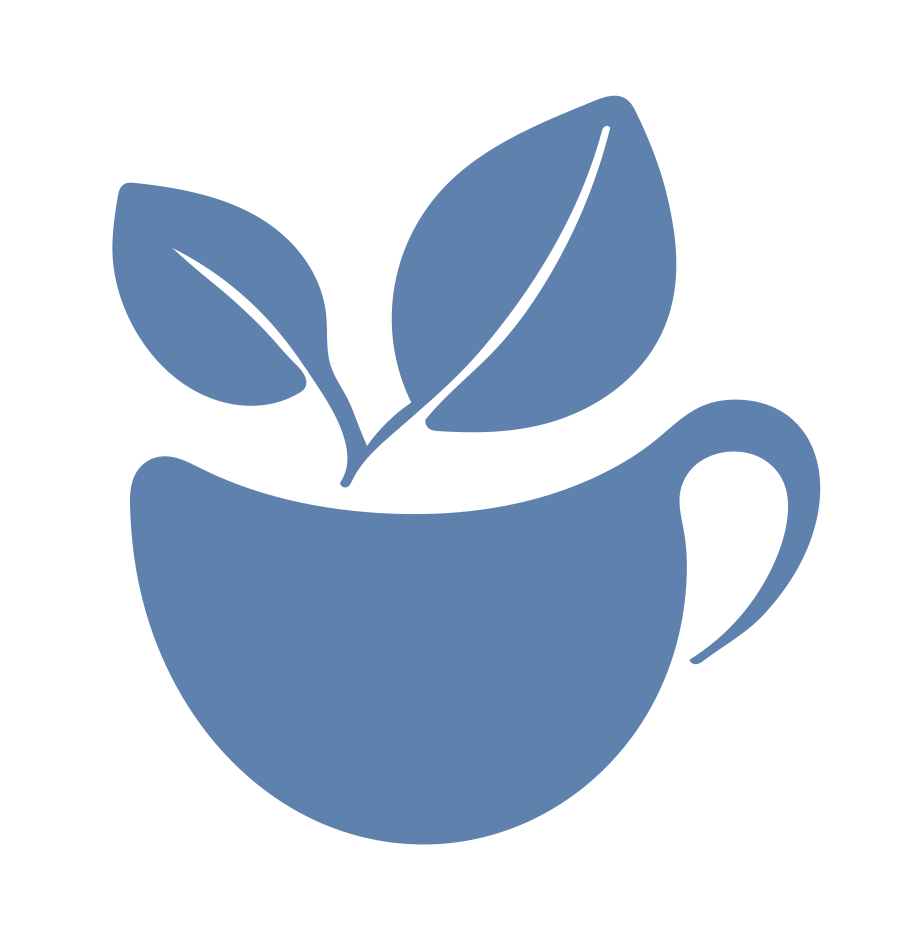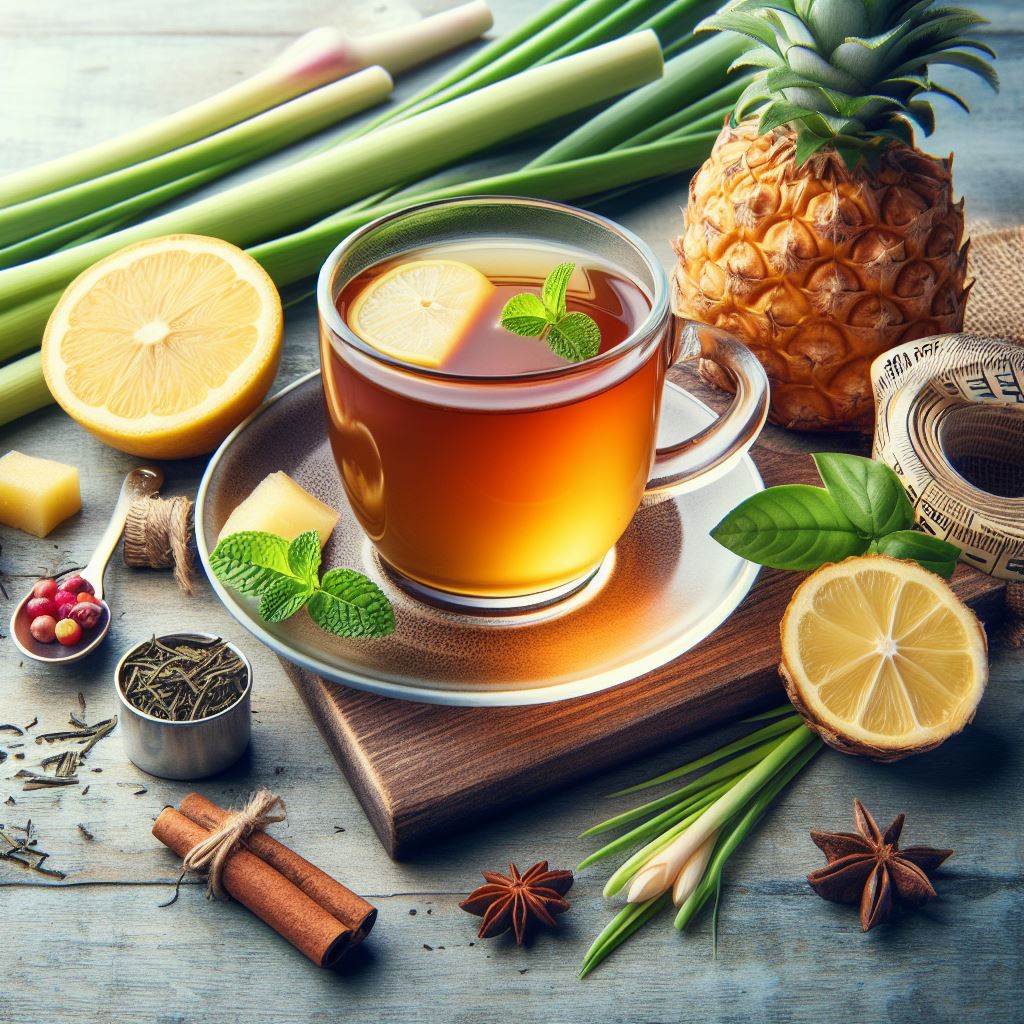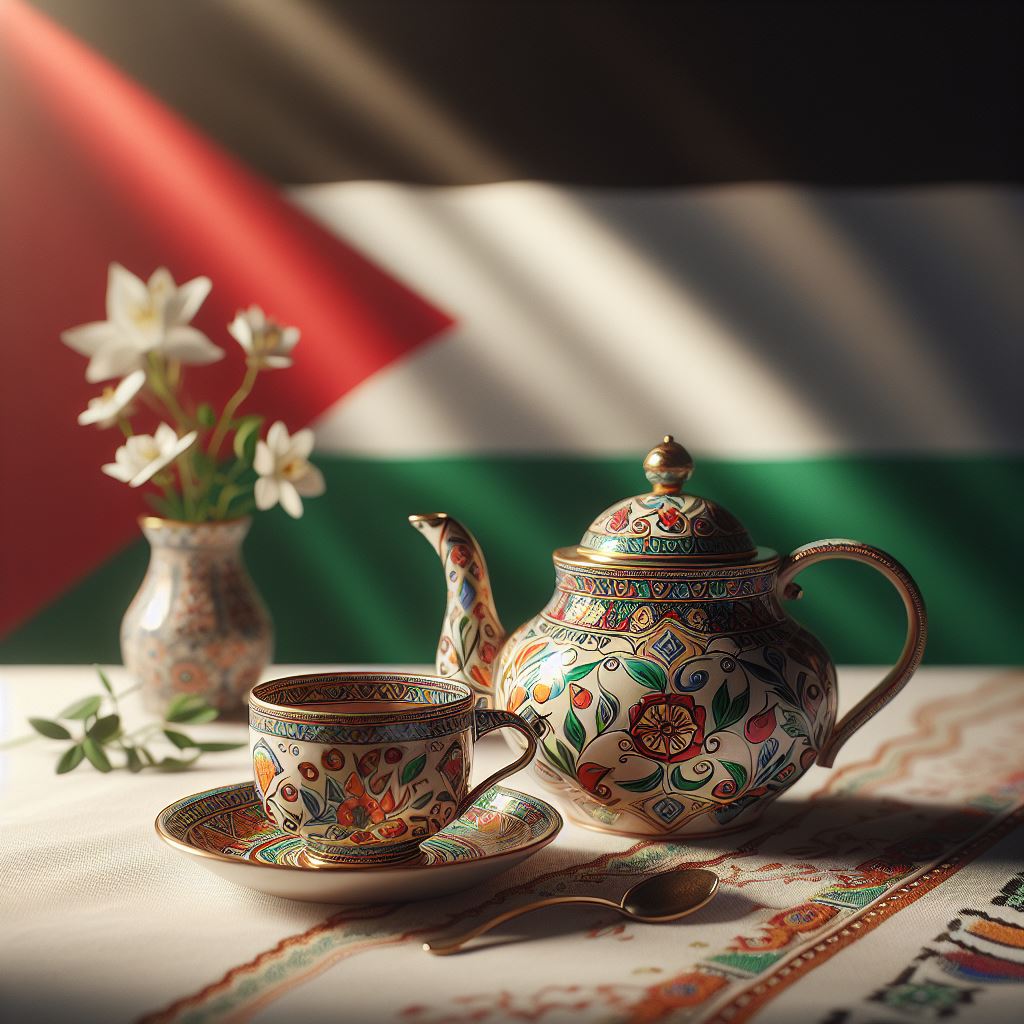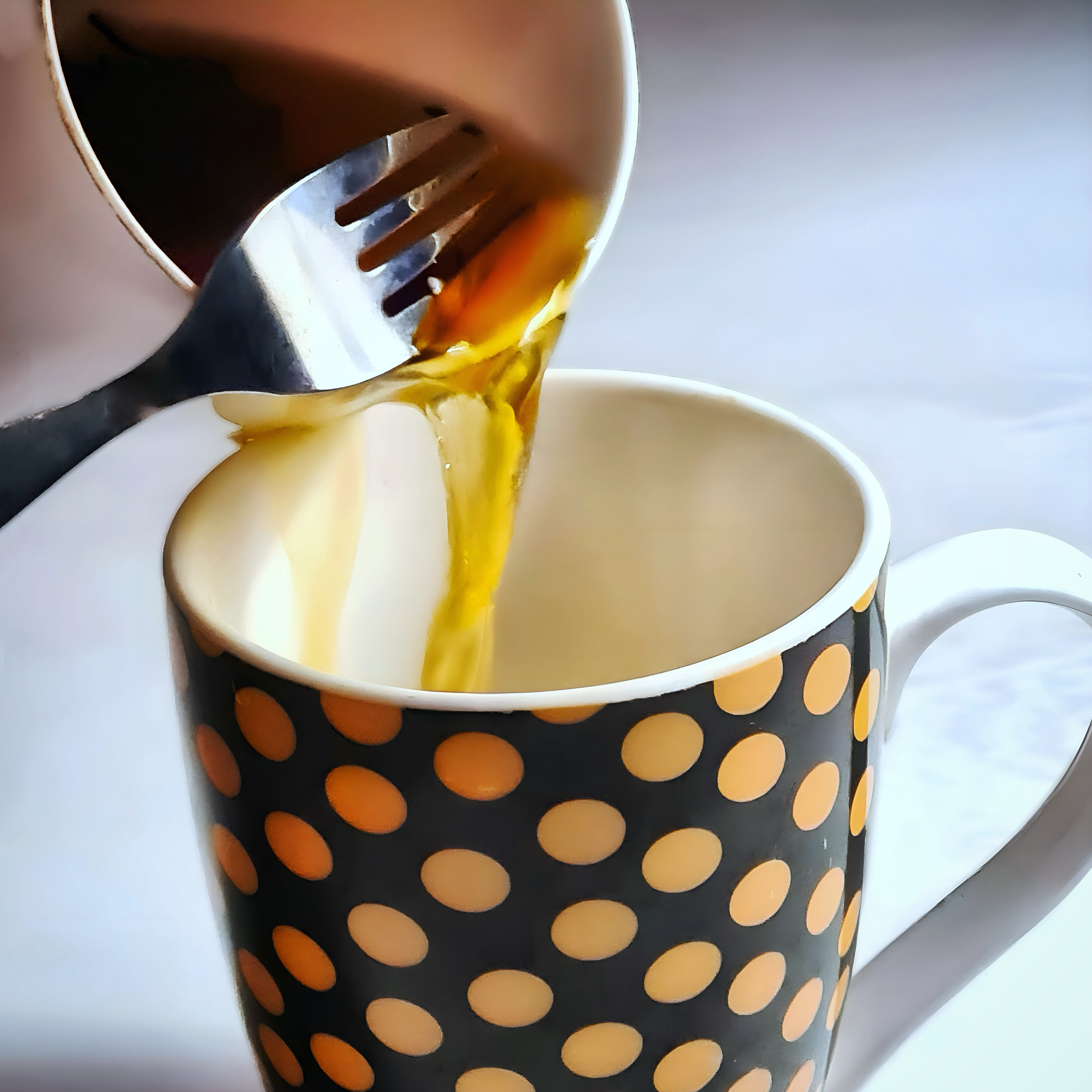Today, we’re on a different kind of brew-venture, one that wakes you up and keeps you going. Yes, we’re discussing caffeine and answering the much-debated question, “What tea has the most caffeine?” But brace yourselves, it’s not as straightforward as you might think! So, brew up a cup of your favorite tea and let’s dive in.

Caffeine and Tea – A Love Story
Caffeine is a natural compound that occurs in many plants, including tea plants. It acts as a stimulant, enhancing alertness, mood, and cognitive performance. It also has some health benefits, such as reducing the risk of diabetes, Parkinson’s disease, and Alzheimer’s disease.
But how did caffeine end up in tea? Well, it’s all thanks to evolution. Tea plants produce caffeine as a defense mechanism against herbivores, insects, and fungi. Caffeine makes the leaves bitter and toxic to these potential threats, while also attracting pollinators and beneficial insects.
Caffeine also benefits the tea drinkers, as it offers those delightful stimulating effects. However, not all teas have the same amount of caffeine. Contrary to popular belief, caffeine levels in tea are not solely determined by the type of tea. There are many other factors that influence how much caffeine is in your cup of tea. Read on and we’ll explore these factors at the end of this article.
The Contenders: Breaking Down Caffeine Content by Tea Type
Let’s look at the usual suspects when it comes to caffeine: green tea, black tea, white tea, oolong tea, and matcha. We’ll discuss each tea type, its general caffeine content, and what contributes to its caffeine level. Spoiler alert: The answer to “What tea has the most caffeine?” might surprise you!
#6 White Tea – 20mg per 8oz cup

White tea is the least processed and most delicate of all teas. It is made from the buds and young leaves of the Camellia sinensis plant, which are withered and dried. White tea has a light and subtle flavor, and is high in antioxidants and other health benefits.
The average caffeine content of white tea is about 20 mg per 8 oz cup. However, this can vary depending on the type and quality of the white tea, as well as the brewing techniques. For example, some white teas, such as Silver Needle and White Peony, have more caffeine than others, such as Bai Mu Dan and Shou Mei. This is because Silver Needle and White Peony use more buds, which have more caffeine. On the other hand, Bai Mu Dan and Shou Mei use more leaves, which have less caffeine.
#5 Green Tea – 30mg per 8oz cup

Green tea is one of the most popular and widely consumed teas in the world. It is made from the leaves of the Camellia sinensis plant, which are withered, rolled, and fired to prevent oxidation. Green tea has a light and fresh flavor, and is rich in antioxidants and other health benefits.
The average caffeine content of green tea is about 30 mg per 8 oz cup. However, this can vary depending on the type and quality of the green tea, as well as the brewing techniques. For example, some green teas, such as sencha and gunpowder, have more caffeine than others, such as jasmine and genmaicha. This is because sencha and gunpowder use more young and tender leaves, which have more caffeine. On the other hand, jasmine and genmaicha use more mature and lower-grade leaves, which have less caffeine. Additionally, jasmine and genmaicha are blended with other ingredients, such as jasmine flowers and roasted rice. These ingredients usually dilute the caffeine content.
#4 Oolong Tea – 40mg per 8oz cup

Oolong tea is a unique and diverse tea that falls somewhere between green and black tea. It is made from the leaves of the Camellia sinensis plant, which are withered, rolled, oxidized to varying degrees, and fired. Oolong tea has a complex and varied flavor, ranging from floral and fruity to roasted and earthy.
The average caffeine content of oolong tea is about 40 mg per 8 oz cup. However, this can vary depending on the type and quality of the oolong tea, as well as the brewing techniques. For example, some oolong teas, such as Tieguanyin and Da Hong Pao, have more caffeine than others, such as Dong Ding and Jin Xuan. This is because Tieguanyin and Da Hong Pao use more buds and tips, which have more caffeine. On the other hand, Dong Ding and Jin Xuan use more mature and lower-grade leaves, which have less caffeine. Additionally, Tieguanyin and Da Hong Pao are more oxidized, which can increase the caffeine content. Dong Ding and Jin Xuan are less oxidized, which can decrease the caffeine content.
#3 Black Tea – 50mg per 8oz cup

Black tea is another popular and widely consumed tea in the world. It is made from the leaves of the Camellia sinensis plant, which are withered, rolled, oxidized, and fired. Black tea has a dark and robust flavor, and is often blended with other ingredients, such as milk, sugar, or spices.
The average caffeine content of black tea is about 50 mg per 8 oz cup. However, this can vary depending on the type and quality of the black tea, as well as the brewing techniques. For example, some black teas, such as Assam and Ceylon, have more caffeine than others, such as Darjeeling and Earl Grey. This is because Assam and Ceylon use more buds and tips, which have more caffeine, while Darjeeling and Earl Grey use more mature and lower-grade leaves, which have less caffeine. Additionally, Earl Grey is blended with bergamot oil, which dilutes the caffeine content.
#2 Matcha: 70mg per 8oz cup

Matcha is a special type of green tea that is made from the finely ground powder of the whole tea leaf. It is prepared by whisking the powder with hot water in a bowl, creating a frothy and creamy beverage. Matcha has a rich and vegetal flavor, and is packed with antioxidants and other health benefits.
The average caffeine content of matcha is about 70 mg per 8 oz cup. However, this can vary depending on the type and quality of the matcha, as well as the preparation techniques. For example, some matcha, such as ceremonial grade and premium grade, have more caffeine than others, such as culinary grade and cafe grade. This is because ceremonial grade and premium grade use more young and tender leaves, which have more caffeine, while culinary grade and cafe grade use more mature and lower-grade leaves, which have less caffeine. Additionally, ceremonial grade and premium grade are more finely ground, which can increase the caffeine content, while culinary grade and cafe grade are more coarsely ground, which can decrease the caffeine content.
#1 The Surprising Champion: Yerba Mate – 85mg per 8oz cup

Just when you thought you had it all figured out, we’ll introduce you to Yerba Mate, a South American brew that might just steal the caffeine crown. Yerba Mate is made from the dried leaves and stems of the Ilex paraguariensis plant, which are steeped in hot water in a gourd and sipped through a metal straw. Yerba Mate has a bitter and herbal flavor, and is a staple drink in countries such as Argentina, Brazil, Uruguay, and Paraguay.
The average caffeine content of Yerba Mate is about 85 mg per 8 oz cup. However, this can vary depending on the type and quality of the Yerba Mate, as well as the brewing techniques. For example, some Yerba Mate, such as air-dried and aged, have more caffeine than others, such as smoke-dried and fresh. This is because air-dried and aged Yerba Mate have more concentrated caffeine, while smoke-dried and fresh Yerba Mate have more diluted caffeine. Additionally, some Yerba Mate, such as pure leaf and organic, have more caffeine than others, such as mixed with stems and additives. This is because pure leaf and organic Yerba Mate have more natural caffeine, while mixed with stems and additives Yerba Mate have less or no caffeine.
Factors Influencing Caffeine Content in Tea
Believe it or not, the caffeine content in your cup of tea isn’t just about whether it’s green, black, or oolong. Several factors come into play, such as the part of the tea plant used, growing conditions, processing methods, and brewing techniques. Let’s delve into these aspects to give you a more nuanced understanding of what’s fueling your favorite cuppa.
Part of the Tea Plant Used

The caffeine content in tea varies depending on which part of the tea plant is used. Generally, the younger and smaller the leaves, the higher the caffeine content. This is because the young buds and tips are more vulnerable to predators, so they produce more caffeine as a defense. The older and larger the leaves, the lower the caffeine content, as they have less need for protection.
This means that teas that use more buds and tips, such as white teas and some black teas, tend to have higher caffeine levels than teas that use more mature leaves, such as green teas and some oolong teas. However, this is not a hard and fast rule, as there are exceptions and variations among different tea varieties.
Growing Conditions
The caffeine content in tea also depends on the growing conditions of the tea plants. Factors such as altitude, climate, soil, and fertilization can affect how much caffeine the plants produce. For example, tea plants grown at higher altitudes tend to have more caffeine, as they face more environmental stress and need more protection. Tea plants grown in warmer and wetter climates also tend to have more caffeine, as they grow faster and produce more leaves. Tea plants grown in nutrient-rich soil and with more fertilization also tend to have more caffeine, as they have more resources to synthesize caffeine.
This means that teas from different regions and estates can have different caffeine levels, even if they are the same type of tea. For instance, a Darjeeling black tea from India might have less caffeine than an Assam black tea from India, as Darjeeling is grown at higher altitudes and has cooler and drier weather than Assam.
Processing Methods
The caffeine content in tea is also affected by the processing methods that the tea leaves undergo. Processing methods include withering, rolling, oxidizing, firing, and blending. These methods can alter the chemical composition and structure of the tea leaves, which can influence how much caffeine is extracted during brewing. Check out our guide for more on Tea Processing: The Ultimate Journey from Plant to Cup.
Ultimately, teas that undergo different processing methods can have different caffeine levels, even if they are from the same tea plant. For example, green tea is minimally processed, as it is only withered, rolled, and fired. Black tea is fully oxidized, as it is withered, rolled, oxidized, and fired. Oolong tea is partially oxidized, as it is withered, rolled, oxidized to varying degrees, and fired. White tea is the least processed, as it is only withered and dried. These processing methods can affect the caffeine content in different ways, depending on the type and quality of the tea leaves.
Brewing Techniques
The caffeine content in tea is also influenced by the brewing techniques that you use. Factors such as water temperature, steeping time, and tea-to-water ratio can affect how much caffeine is extracted from the tea leaves into the water.
For example, water temperature affects the solubility of caffeine, as higher temperatures can dissolve more caffeine than lower temperatures. Steeping time affects the extraction rate of caffeine, as longer steeping times can extract more caffeine than shorter steeping times. Tea-to-water ratio affects the concentration of caffeine, as more tea leaves can produce more caffeine than less tea leaves.
Brewing Techniques to Control Your Caffeine Intake

If you’re concerned about having too much or too little caffeine in your tea, don’t worry. We’ll share tips and tricks on how you can adjust the caffeine levels in your brew, from the steeping time to water temperature.
- Steeping time: The longer you steep your tea, the more caffeine you’ll extract. If you want more caffeine, steep your tea for 3 to 5 minutes. If you want less caffeine, steep your tea for 1 to 2 minutes.
- Water temperature: The hotter the water, the more caffeine you’ll dissolve. If you want more caffeine, use boiling water (212°F) for black tea, oolong tea, and Yerba Mate, and near-boiling water (175°F) for green tea, white tea, and matcha. If you want less caffeine, use cooler water (160°F) for black tea, oolong tea, and Yerba Mate, and cold water (40°F) for green tea, white tea, and matcha.
- Tea-to-water ratio: The more tea leaves you use, the more caffeine you’ll produce. If you want more caffeine, use 2 teaspoons of tea leaves per 8 oz cup of water. If you want less caffeine, use 1 teaspoon of tea leaves per 8 oz cup of water.
Conclusion
We hope you enjoyed this brew-tiful guide on what tea has the most caffeine. As you can see, caffeine content in tea is more complex than it appears. It depends on many factors, such as the part of the tea plant used, growing conditions, processing methods, and brewing techniques. Therefore, it’s hard to give a definitive answer to what tea has the most caffeine, as it can vary from cup to cup.
However, based on the average caffeine content, we can say that Yerba Mate has the most caffeine, followed by matcha, black tea, oolong tea, green tea, and white tea. But remember, these are just general guidelines, and you can always experiment with different teas and brewing methods to find the perfect balance for your needs and preferences.
So, what are you waiting for? Grab your favorite tea and enjoy the benefits of caffeine, whether it’s to boost your energy, mood, or performance. And don’t forget to share this post with your fellow tea lovers, so they can learn more about what tea has the most caffeine. Cheers!
Discover More Tea-Related Articles:
- Da Hong Pao Tea – The Most Expensive Tea in the World
- The Best Non Dairy Milk to Compliment Your Tea
- How to Make the Traditional Tea of Palestine – Shay bil Maramiya
- Top 10 Best British Biscuits for Dunking in Tea
- How to Make Oat Tea with Honey, Cinnamon, and Vanilla
Sources:
- [1] Caffeine in Tea | RateTea. (n.d.). Retrieved April 6, 2023
- [2] Caffeine Content of Drinks. (n.d.). Retrieved April 6, 2023
- [4] How Much Caffeine Is in Matcha? (n.d.). Retrieved April 6, 2023
- [5] How Much Caffeine Is in Yerba Mate? (n.d.). Retrieved April 6, 2023





Leave a Comment